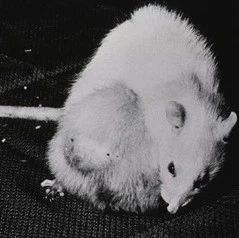德国保罗—艾尔利希(Paul Ehrlich)研究所首次发现可以借助病毒消灭癌症干细胞。该研究所的研究人员对麻疹病毒进行了基因再编程,在实验中利用此种新型病毒有效控制了多种实验动物体内的肿瘤。其相关研究成果发表在2012年分子医学专业期刊《癌症研究》上。

癌症肿瘤由多种不同异常细胞混合而成,这些异常细胞能够通过放疗和化疗等不同方法进行治疗。但是其中的癌症干细胞是公认最难以通过放疗和化疗治疗的,而且它还是癌细胞转移的来源。为此,研究人员一直以来都在寻求能够有效控制和消灭癌症干细胞的治疗方法。
保罗—艾尔利希研究所的研究人员发现,借助特定的麻疹病毒可以有效控制多种肿瘤生长甚至可以完全治愈。为此,他们对普通疫苗用麻疹病毒进行了基因再编程,使这些病毒只感染细胞表面携带有CD133蛋白的特定细胞(这种蛋白质是癌症干细胞的特征)。他们还与德国癌症研究中心(DKFZ)开展了合作实验,在实验小鼠体内验证了该治疗方法的有效性。实验表明:基因再编程麻疹病毒可以明显控制肝癌和结肠癌生长,甚至可以完全治愈肝癌。

 Specific Elimination of CD133+ Tumor Cells with Targeted Oncolytic Measles Virus
Specific Elimination of CD133+ Tumor Cells with Targeted Oncolytic Measles Virus
Bach P, Abel T, Hoffmann C, Gal Z, Braun G, Voelker I, Ball CR, Johnston IC, Lauer UM, Herold-Mende C, Mühlebach MD, Glimm H, Buchholz CJ.
Tumor-initiating cells (TIC) are critical yet evasive targets for the development of more effective antitumoral strategies. The cell surface marker CD133 is frequently used to identify TICs of various tumor entities, including hepatocellular cancer and glioblastoma. Here, we describe oncolytic measles viruses (MV) retargeted to CD133. The viruses, termed MV-141.7 and MV-AC133, infected and selectively lysed CD133(+) tumor cells. Both viruses exerted strong antitumoral effects on human hepatocellular carcinoma growing subcutaneously or multifocally in the peritoneal cavity of nonobese diabetic/severe combined immunodeficient (NOD/SCID) mice. Notably, the CD133-targeted viruses were more effective in prolonging survival than the parental MV-NSe, which is currently assessed as oncolytic agent in clinical trials. Interestingly, target receptor overexpression or increased spreading kinetics through tumor cells were excluded as being causative for the enhanced oncolytic activity of CD133-targeted viruses. MV-141.7 was also effective in mouse models of orthotopic glioma tumor spheres and primary colon cancer. Our results indicate that CD133-targeted measles viruses selectively eliminate CD133(+) cells from tumor tissue, offering a key tool for research in tumor biology and cancer therapy.
文献链接:https://cancerres.aacrjournals.org/content/early/2013/01/04/0008-5472.CAN-12-2221.abstract






